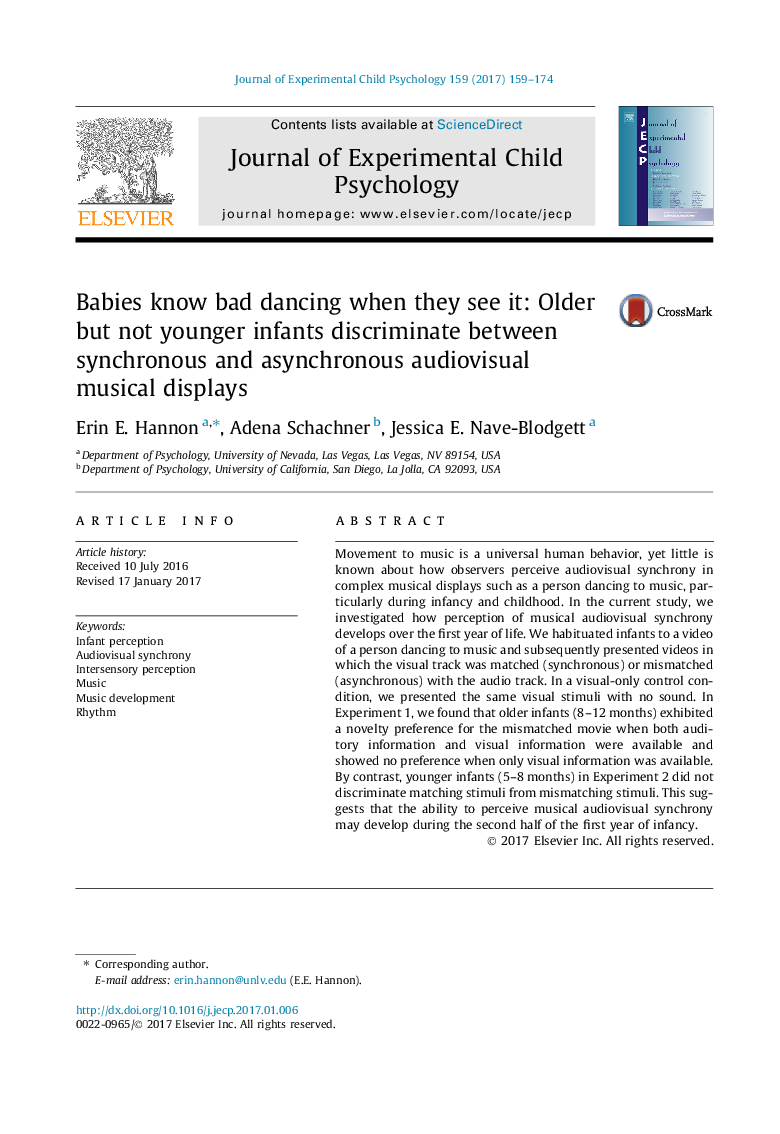| Article ID | Journal | Published Year | Pages | File Type |
|---|---|---|---|---|
| 5039986 | Journal of Experimental Child Psychology | 2017 | 16 Pages |
Abstract
Movement to music is a universal human behavior, yet little is known about how observers perceive audiovisual synchrony in complex musical displays such as a person dancing to music, particularly during infancy and childhood. In the current study, we investigated how perception of musical audiovisual synchrony develops over the first year of life. We habituated infants to a video of a person dancing to music and subsequently presented videos in which the visual track was matched (synchronous) or mismatched (asynchronous) with the audio track. In a visual-only control condition, we presented the same visual stimuli with no sound. In Experiment 1, we found that older infants (8-12Â months) exhibited a novelty preference for the mismatched movie when both auditory information and visual information were available and showed no preference when only visual information was available. By contrast, younger infants (5-8Â months) in Experiment 2 did not discriminate matching stimuli from mismatching stimuli. This suggests that the ability to perceive musical audiovisual synchrony may develop during the second half of the first year of infancy.
Related Topics
Social Sciences and Humanities
Psychology
Developmental and Educational Psychology
Authors
Erin E. Hannon, Adena Schachner, Jessica E. Nave-Blodgett,
